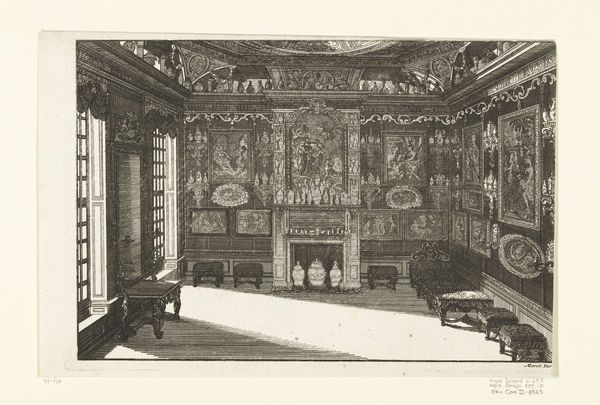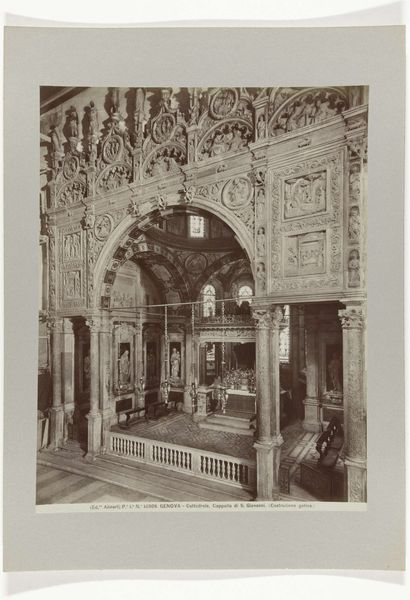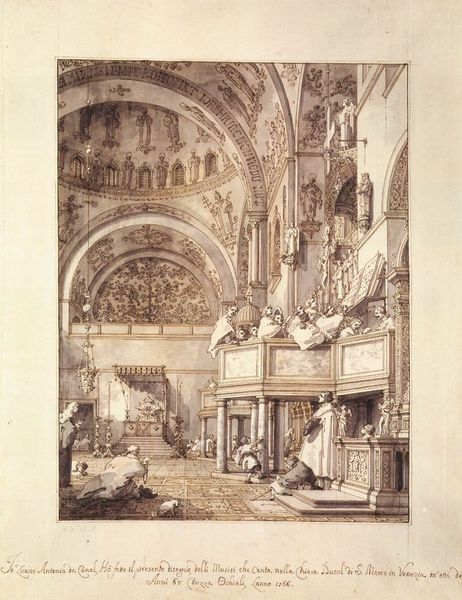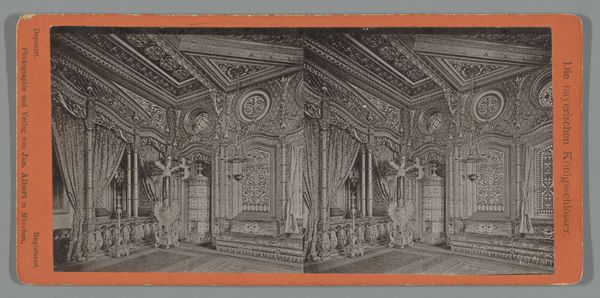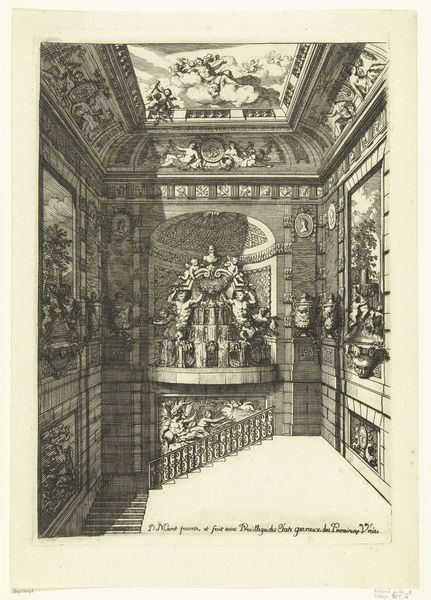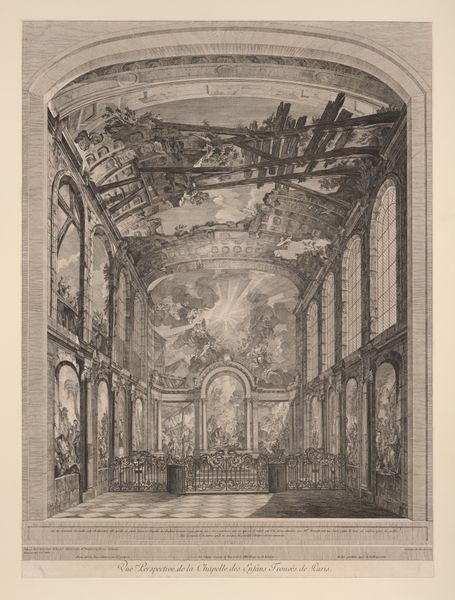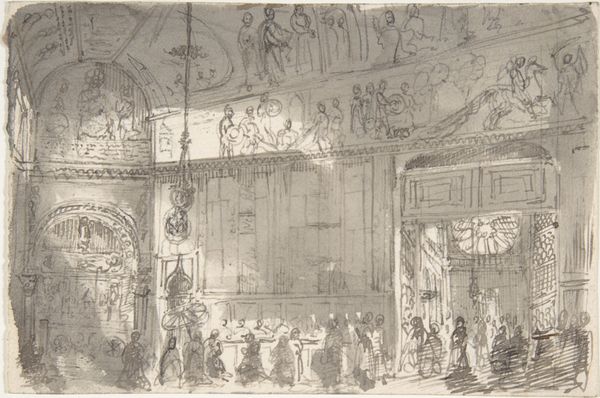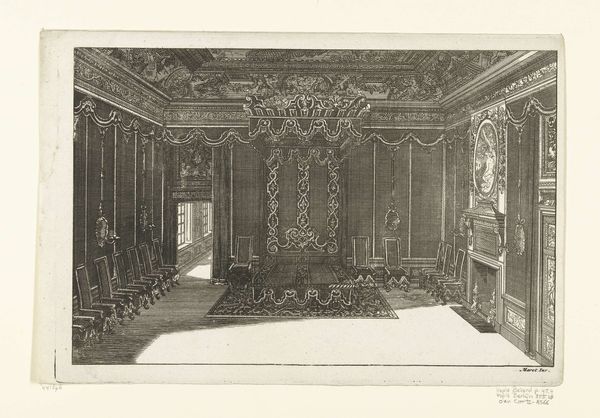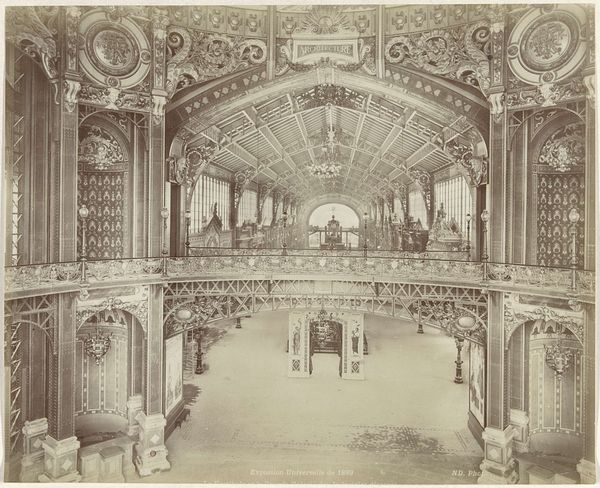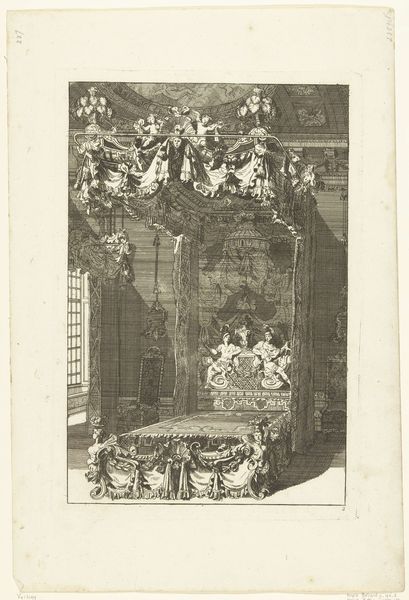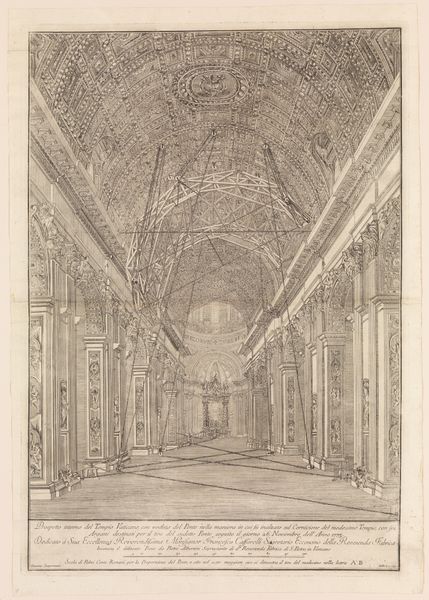
drawing, ink, pen, architecture
#
architectural sketch
#
drawing
#
neoclacissism
#
pen sketch
#
pencil sketch
#
ink
#
pen
#
cityscape
#
architecture
Copyright: Public Domain: Artvee
Curator: The intricacy here is astounding. The sheer amount of decorative labor is, well, theatrical. Editor: That's quite apt! We are looking at a drawing titled "Interior of a Theatre," created by David Roberts sometime between 1796 and 1864, rendered in pen and ink. Curator: There’s a kind of quiet grandeur, even in monochrome. It feels like a backstage pass to a world of social performance, where architecture itself plays a leading role. Think of the power dynamics built into these spaces – boxes for the elite, a pit for the... less elite. Editor: Absolutely, and note how Roberts delineates the architecture using precise lines to describe material elements. This isn’t just a representation of space but an almost tactile engagement with the plasterwork, the wooden frames, perhaps even the textiles of the curtains. The meticulousness suggests this was a working drawing—possibly intended for prints aimed at middle-class audiences eager to experience aristocratic spectacle. Curator: It's a fascinating example of Neoclassical influence too. Notice the symmetry, the use of classical motifs, all carefully deployed to evoke an aura of refinement and historical weight. Theatre's were key sites in cultivating bourgeois taste and social ideals in this period. Editor: Look at the sweeping curve of the balcony—clearly communicated with expert handling of perspective and materiality. But at what cost? The sketch privileges visual appeal over the invisible labor required to build and maintain such an elaborate structure. Curator: Perhaps the drawing inadvertently underscores this cost, focusing attention as it does on design and its socio-cultural implications—we are left considering both the visible extravagance and implied infrastructure, and hierarchies made so deliberately and conspicuously real. Editor: Precisely. It reveals the relationship between artistry, social class, and, yes, labor conditions, making visible what those performances obscured. Curator: I'll never look at another opera house without thinking about all that's unseen and implied! Editor: And I’ll be looking to understand exactly what this drawing cost—not in pounds and shillings, but in hours of human effort.
Comments
No comments
Be the first to comment and join the conversation on the ultimate creative platform.


